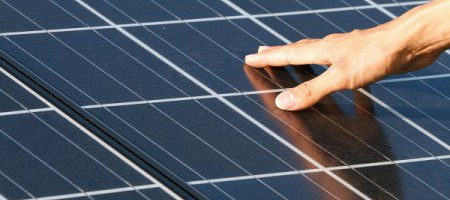Investopedia: How To Profit From Solar Energy
According to a report by analytics firm IHS Technology, the market for solar electricity installations is poised to grow by 16% worldwide this year. In 2014, the amount of PV solar power generation in the U.S. grew by 36%, with an anticipated further output growth of 26% in 2015, amounting to more than 8.2 gigawatts of capacity. As the supply glut from Chinese production is met by increasing demand, the profits to solar companies are likely to increase.
One of the most convenient ways to invest in the solar energy sector is through the Guggenheim Solar ETF (TAN). According to its prospectus, the ETF consists of approximately 25 global stocks selected based on their relative importance in the solar power sector. It includes companies that produce solar power equipment and products for end users, companies that produce the equipment used by solar panel producers, solar installers and companies specializing in solar cell manufacturing. Despite falling 2.1% in 2014, TAN has returned nearly 41% year to date.
Gizmodo: Tesla’s New Battery Could Solve One of Solar Power’s Biggest Problems
So far, specific details are thin on the new battery designed for home use that Tesla’s announcing next week. But just based on what we do know, it’s a pretty big deal. The quest for a good battery that can store home-generated power is kind of like the holy grail for a renewable energy future. This one product might change everything.
A New York Times article published earlier this week essentially sets up the problem that Tesla’s battery will solve. In Hawaii, 12 percent of homes have some kind of solar energy, by far the highest rate for any place in the US at the moment. In fact, that rate is growing too quickly—solar customers are dumping so much energy back onto the grid that they’re taxing the delicate and often aging infrastructure that was only designed to deliver power to homes. What’s happening in Hawaii is actually indicative of what’s going to be an issue everywhere as many cities start to see an increase in large-scale solar implementation: There’s going to be too much energy generated, and nowhere to put it.
OilPrice: Something To Consider Before Buying In To Rooftop Solar
Green energy has moved to the forefront of the national conversation on energy production even as oil prices sit near decade lows. The simple fact that solar power and wind power now command so much attention speaks to how the country’s views on energy have changed. But now some people are going one step further and actually looking to install enough solar panels on their homes to become energy positive – that is to generate more energy than they actually consume. Britain’s Guardian newspaper ran a recent story about this , but that story skipped over a few obvious issues. Issues that became clear to me after I recently talked to a solar company about making my home energy producing.
Producing more energy than a house consumes is very easy for some homes and essentially impossible for others. Most obviously, people in climates without a lot of sunlight will have a much more difficult time producing energy than people in sunnier climates. Even forgetting about that fact, the direction a house is facing, trees in the area, and angle of the roofline all dramatically impact the level of solar production that can be expected from a house.
VOA News: South Africa’s Power Crisis Sparks Interest in Solar Power
South Africa is enduring an unprecedented power generation crisis. Electricity blackouts continue across the country as its power monopoly, Eskom, plunges deeper into chaos. Eskom acknowledges it failed to maintain important infrastructure for the past 20 years. As winter begins to bite, South Africa is bracing for widespread electricity outages, and demand for alternative sources of energy is spiking.
A diesel-driven generator powers a restaurant in Johannesburg. For the third day in a row, large parts of the city have no electricity. The restaurant owner, Heidi Welman, spends hundreds of dollars a month on her generator to keep her business open. “It’s a real big pain in the butt,” she said.















Comments